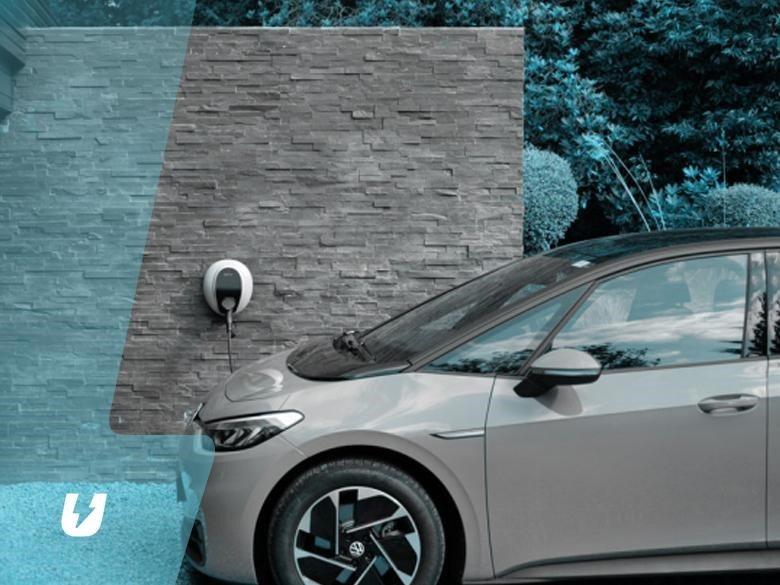Being able to charge your electric vehicle at home is a luxury that car owners like you can enjoy as long as you can afford it. The problem is that EV chargers can be costly. After spending a lot of money on the new electric vehicle, you may not have enough funds to buy and install a unit at home.
Luckily, you can opt for an Electric Vehicle Homecharge Scheme or EVHS grant through the government. The scheme allows EV owners like you to buy and install a new charge point at a huge discount.
Learn how the scheme works and how you can qualify for a grant so you can buy and install a charging station at home soon.
What is an EVHS Grant?
Electric vehicles are very crucial in decarbonizing the country’s transport system. The government acknowledges that many electric car owners will want to charge their vehicles at home and so the Electic Vehicle Homecharge Scheme (EVHS) grant was established for that purpose.

The Electric Vehicle Homecharge Scheme offers a 75% grant for the costs of purchasing and installing one chargepoint. This grant offers £350 for the purchase and installation of an electric car charger (including VAT).
The EVHS is a government-funded scheme managed by the Office of Zero Emission Vehicles (OZEV). There are certain requirements you need to meet to qualify. The first requirement is that the applicant should own, lease, or order an eligible vehicle and have off-street parking within his property.
An applicant can opt for 2 chargepoints within the property if they possess two eligible vehicles.
How Can You Be Eligible for an EVHS?
To be eligible for an EVHS, you must meet the following requirements:
- You must have bought an eligible electric car or plug-in hybrid vehicle from October 1, 2016, and beyond. This doesn’t mean that your car must have been manufactured after that date, simply that you purchased it after October 1, 2016, and beyond.
- You must own an off-street or private parking where a charging cable won’t traverse the pedestrian asphalt. This is important, even though it might be frustrating if you live in a terraced house where there is no off-road parking, but, unfortunately, the grant covers only those with off-road parking at the moment.
- The charger should be OZEV-approved. Our chargers at Pumpt are OZEV-approved and you can find a list of OZEV-eligible chargers on our product page.
- The installation date shouldn’t exceed four months before the delivery date or the date you become the vehicle’s registered driver. That doesn’t mean that there isn’t a specific time frame in which we need to do the installation, but just bear in mind that it’s only if the vehicle is a few months away from being collected or delivered.
- You must hire an OZEV-approved installer like Pumpt. It’s the installer who will claim the OZEV grant on your behalf because you can’t claim it yourself for reasons we will explain shortly.
An applicant isn’t allowed to apply for a grant if they’ve already been granted the scheme (or the schemes before it like the Domestic Recharge Scheme).
But if they presently own 2 qualified vehicles, a second chargpoint for the second vehicle can be granted a claim. The condition applies even if:
- You’ve previously been granted the Domestic Recharge Scheme
- You’ve purchased another charpoint
- Upgraded an old chargepoint into a new one
- Your new and old vehicles are not compatible
- You’re submitting a claim for the costs of transferring your chargepoint into a new property
If an applicant transfers to another property with an existing chargepoint, and they want to have it replaced, they can qualify for the grant as long as the applicant meets the requirements and has no previous claim against the scheme.
Which Electric Vehicles Are OZEV Approved?
Is your vehicle OZEV approved? If you don’t know yet, then there’s a list for that as well. Check to see if your vehicle is OZEV approved. Effectively, the way the government decides if the vehicle is eligible all comes down to the CO2 emissions.

The vehicle must emit less than 75 grams per Km of CO2. That means all-electric vehicles are OZEV-approved but it does mean that some plug-in hybrid vehicles are also OZEV-approved.
Just be vigilant here because some plug-in hybrid vehicles have more than one engine size or engine type and it might mean that one model in the range is OZEV approved but perhaps one with the bigger engine has higher CO2 emissions and may not be eligible.
So don’t assume that just because one of your vehicles is on the list of OZEV-approved vehicles all vehicles of the same brand are eligible. So it’s really important to double-check the list.
For vehicle requirements, the following applicants are eligible for the grant:
- Applicants who are registered keepers of the eligible electric vehicle – the registered keeper doesn’t necessarily have to be to vehicle’s owner, but they should be responsible for it and pay for MOT and road tax.
- Applicants are assigned to a company vehicle for no less than 6 months.
- Applicants who’ve leased an eligible vehicle using a salary sacrifice scheme.
- Applicants who’ve leased an eligible electric vehicle for no less than 6 months
- Applicants assigned to an eligible vehicle by their employer for no less than 6 months
- Applicants who’ve ordered an eligible vehicle
How Do I Claim a £350 EVHS Grant?
OZEV’s department will go through the vehicle details with you, and check what type of ownership you have; whether you own it or whether it’s a lease. They will collect basic information just to validate your eligibility for the grant. It’s all very easy and you can do it online.

The grant can be claimed if the customer selects an EVHS installer for the chargepoint installation. Your EVHS installer will check if they are eligible and submits the application on your behalf. Your installer will then bill you for the installation cost, minus the grant amount they’ve opted for.
If the installer’s application is approved, they will be granted the amount they’ve offset from your bill. The OZEV generally processes claims within 30 business days for experienced electric vehicle homecharge scheme authorised installers.
What Proof Do I Need to Submit?
What documents would you need to get approved for an OZEV grant claim? This would depend on your situation but some of the common proofs required include:
- V5C: to prove that you are the registered keeper of the vehicle.
- Address and contact details. The details must match the driver’s claiming the OZEV grant. So it must be you if you’re the one claiming the grant, and you are the main driver of the vehicle.
- Vehicle make, model, registration & VIN: You will get all these if your vehicle is on order/
- MPAN number (electricity supply number): This should be on your electricity supply bill and is usually a thirteen to twenty-one-digit number.
The government maintains the right to cancel the grant at any time, especially with noncompliance, but will provide a four-week notice to all applicants.
Should the electric vehicle homecharge scheme end, or the grant rate change, the government will fulfil grant claims approved before the date of closing or before any changes have been made. So keep yourself updated with the announcements.
What if Your Car is a Company car or a Leased Vehicle?
The same process applies, although some additional information may be requested from you such as a letterhead from the business proving that you are the primary user of that vehicle. That’s just one example and there are many other examples.
The Driver and Vehicle Licensing Agency (DVLA) accepts a claim for short-term monthly leases as long as the individual had the lease for no lease than 6 months and can prove this.
If the chargepoint is part of the vehicle lease, the following are required:
- The applicant must have an eligible vehicle
- The applicant must have an area of residence and off-street parking to set the installation to meet the off-street charging requirement
- The lease must state the customer’s ownership of the chargepoint upon payment
- Itemized cost of the applicant’s chargepoint along with installation (with VAT), or the amount the grant will offset
- Make sure the chargepoint’s warranty qualifies for the EVHS requirements
- Make sure the vehicle’s lease is no less than six months
- Submit a lease agreement copy to the DVLA to ensure the application is verified
EVHS Grant Update
The EVHS will no longer be available to homeowners in single-unit properties like terraced or semi-detached housing, and bungalows starting April 2022 (including those with mortgages).
The scheme will still be available to:
- Homeowners in flats
- People living in rental accommodations (single-use and flat properties)
Word of Advice
Purchasing an energy-efficient, cost-effective EV charger will save you money and benefit the environment. Our electrical chargers are OZEV-certified, so you are eligible for an EVHS grant if you buy them. Go to our product page, shop around, and take advantage of our special offers.
The application for the EVHS grant is competitive and the scheme may change or close in the future. It would be best to opt for the scheme now before any major changes take place. If you have more questions about the OZEV grant, go to our EV Government Grants page.
Take your knowledge to the next level. Click here to learn more and broaden your horizons: OZEV Grant

